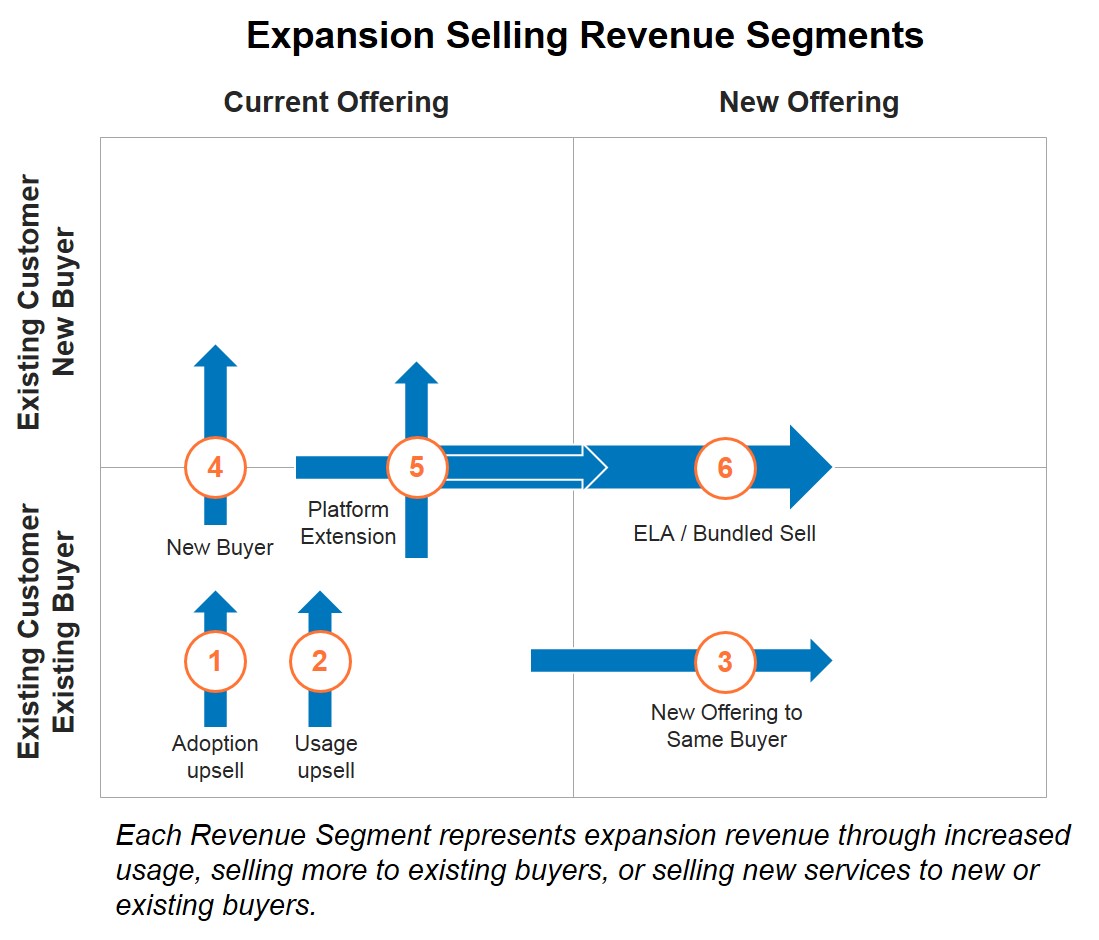Expansion Strategies for XaaS Technology Companies

Alexander Group identifies six unique revenue segments, as well as the steps sales organizations should take to capture revenue segments that will drive their company’s expansion efforts.
Revenue segments represent the specific revenue streams available within existing customers. Revenue segments are combinations of buyers and offerings (both new vs. existing). First and foremost, there is a limited set of expansion revenue segments. Second, success in picking the right expansion strategy starts with defining the segments that will drive the most business. Finally, sales leaders must design and deploy the right customer-facing resources to execute against each revenue segment.
- Adoption Upsell – Ensure customers are maximizing their adoption of the technology across all potential users.
- Usage Upsell – Regardless of the number of users, ensure customers are consuming the technology at its maximum value.
- Multi-Product Cross-Sell to Same Buyer – Sell new features and service offerings to the same purchasing unit within the customer.
- New Buyer – Penetrate new functional groups and buyers.
- Platform Extension – Form of cross-selling based upon extending products on top of core product.
- Sell an Enterprise License Agreement (ELA) or Bundled Solutions – Sold upfront: drive value realization to new & existing buyers through post sale adoption.
Each Revenue segment is unique and entails a different set of conversations, value propositions, buyers and buying processes. For example, the two upsell categories represent revenue segments that start with how your customer is utilizing the solution and how they are currently receiving value. The engagement model for this segment has a strong valence for customer service and client advocacy. By contrast, New Buyer Cross-sell entails the process of identifying new buyers and users through research and existing client referrals. It requires defining and persuading specific value propositions for these new end-buyers.
Most companies have the opportunity to utilize multiple revenue segments. However, the more segments involved in the go-to-customer model, the more complex, expensive and difficult to execute it becomes. It requires companies to focus and align resources appropriately behind a prioritized list of revenue segments that promises to yield the best results.
In a recent study, Alexander Group asked technology executives from XaaS-selling companies which revenue segments they currently use and whether these segments are sufficient for the long-term success of the company. Virtually all the executives agreed on two points. First, they are only good at executing one or two segments; secondly, they need to become better at driving revenue from other revenue segments.
As technology companies continue to evolve to a XaaS model, there are three key steps that executives must take to drive revenue:
- Strategize. Define your expansion revenue strategy. This starts with having an understanding of where the expansion revenue is coming from and what revenue segments need to be prioritized.
- Design. Deeply investigate each revenue segment carefully defining the specific requirements for value propositions, sales plays and competencies needed to fully capture the revenue in each segment.
- Deploy. Update the company’s coverage model and customer-facing roles needed to best cover each segment. And update talent and performance management programs (like sales compensation) to market and best practices.

Alexander Group routinely works with companies to define and execute their XaaS models.
We have proven frameworks and deep experience for building out expansion strategies. Visit our website for more insights and information. Contact us for a briefing on how tech companies are building expansion revenue engines.
